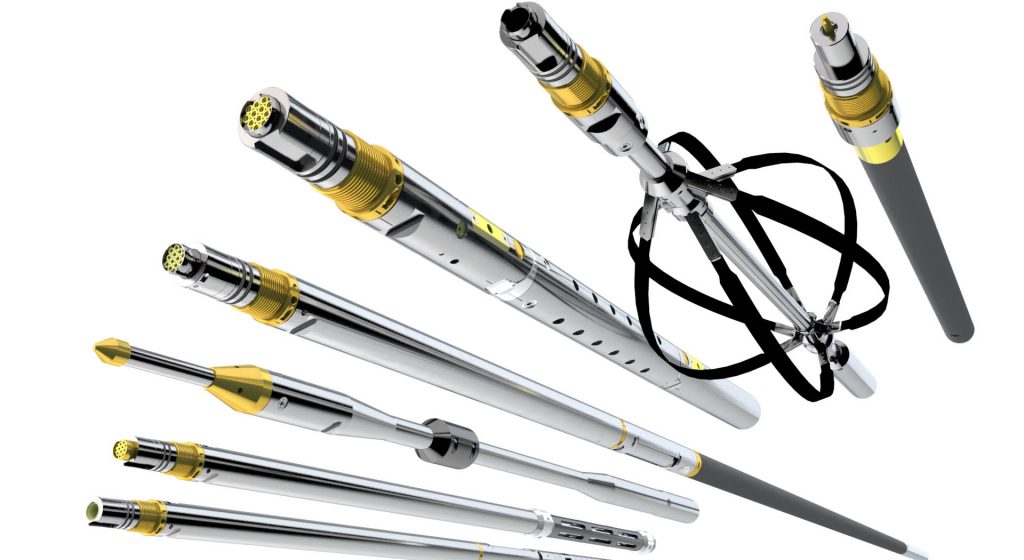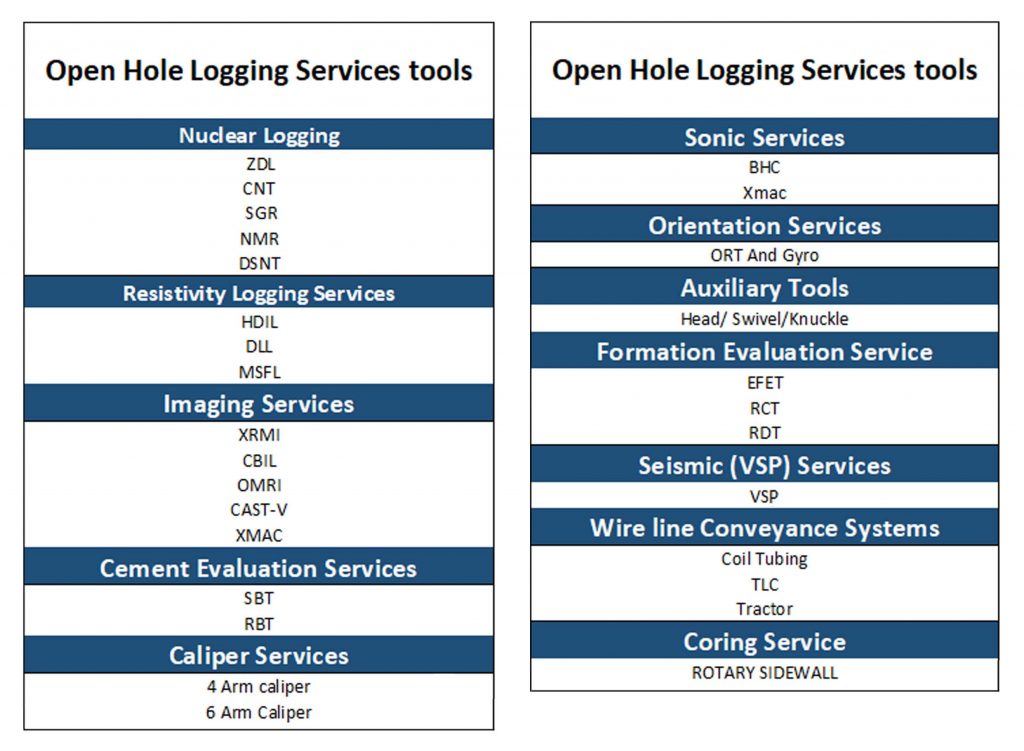
Compensated Neutron Logging Tool (CNT)
The CNT tool is one kind of radioactive logging tool, measuring the hydrogen index of formation to obtain the formation porosity in open or cased boreholes. There are two thermal neutron detectors positioned at different spacing from a neutron source (16-Curie, Americium 241 – Beryllium).
Litho-Density Tool (LDT)
The LDT measures the bulk density and photoelectric cross-section of the formation. Two scintillation detectors (long-spaced or short-spaced detectors) positioned at different spacing from the Cs137 source. 2 spectrums from 2 detectors are displayed and processed while logging. Caliper is also measured. 2.5Ci Cs137 source must be used.
Spectral Density Log Tool (SDL)
Spectral Density Log (SDL)tool provides superior measurements of the bulk density (b) and borehole- compensated photoelectric factor (Pe) that are critical to accurate determination of formation porosity and lithology. State-of-the-art tool design enables the SDL tool to achieve high gamma-ray count rates with minimal borehole sensitivity.
Compensated Spectral Natural Gamma Ray (Hostile Natural tool)
CSNG tool measures the entire gamma ray spectrum, from 0 to 3,000 keV. The tool uses special borehole compensation techniques to provide the industry’s most precise and accurate logs of potassium, uranium, and thorium concentrations. Measurement precision curves and tool diagnostics help validate logging data in the formation. A unique, patented low atomic number tool case enables gamma rays to be measured for accurate data retrieval in cased or open hole environments.
Dual-Spaced Neutron
Dual-Spaced Neutron (DSN) tool is a thermal-neutron tool designed to measure formation porosity from neutron-nuclei interactions. Neutron-porosity logs provide total fluid information for use with resistivity logs and/or pulsed neutron logs in determining formation water saturation.
Spectrum Gama Ray (SGR)+ Orientation Tool
Orientation tool measures deviation and azimuth of the borehole. And it provides three gravity accelerometers and three magnetometers signal to compute the deviation and orientation of the borehole. DSL tool measures the total natural gamma ray and the amounts of potassium(K), uranium(U), and thorium (Th) according the energy level to get the formation property clearly
Nuclear Magnetic Resonance Tool (NMR)
The NMR log can provide information of total porosity, effective porosity, permeability, free fluid volume, irreducible fluid volume, and pore structure in a formation. Especially, NMR is unique superiority in evaluating the low-porosity/low-permeability formation and shale-sand interbedded (thin bed) reservoir, and identifying the fluid properties in a complex reservoir
Digital Acoustic Logging Tool (DALT)
The DALT tool has 2 transmitters and 4 r receiver transducers; it measures the compression wave slowness of the formation and gets formation total porosity. It also can be used as cement bond quality checking tool inside casing.
Micro-Spherical Focused Logging (MSFL)
The MSFL use spherical focused electrodes to enable the current into the flush zone of the formation laterally, it provides flush zone resistivity and The MSFL tool provides measurements of Rxo in all types of conductive mud systems. Rxo is used quantitatively in computing Sxo and moveable water volumes.
Dual Lateral Logging Tool (DLL)
The DLL provides two resistivity measurements. These two measurements have different depth of investigation into the formation. Two different frequencies are used to enable the simultaneous measurements.
Dual induction log Tool (DIT)
The Dual Induction Laterolog (DIL) tool provides and accurate profile of borehole invasion and formation resistivity. The tool provides measurements at three depths of investigation, a deep and medium induction curve and a shallow laterolog resistivity curve.
Definition Array Induction Logging Tool (DAIL)
The DAIL uses 8 array coils and 8 different frequency, getting formation resistivity of different investigation depth and different vertical resolution by software focusing method, SP is also recorded
High-Resolution Laterolog Array Tool (HRLA)
The HRLA* High-Resolution Laterolog Array tool attacks the difficult task of resolving true formation resistivity (Rt) in thinly bedded and deeply invaded formations by providing five independents, actively focused, depth- and resolution-matched measurements.
High Definition Resistivity Imaging Tool (XRMI)
The XRMI has 6 pads armed on 6 independent arms, 25button electrodes on each pad, total 150curves be recorded, can get resistivity image after processing. The new design can make the image clearer and work well in higher salinity drilling fluid.
ULTRA-Sonic Borehole Circumstance Imaging Tool (CBIL)
Acoustic Image Tool is an acoustic device producing image of borehole wall. These images can be used for formation evaluation and borehole inspection in both clastic and carbonate environment. The instrument can also be run in cased holes for casing inspection application Resolves features impossible to resolve using conventional logging tools.
Cross-Multiple Array Acoustic (MAC)
The MAC has multi directional transmitter transducer and 8 quadrilateral receivers, can record all the full waveforms, get many formation properties, such as mechanic, anisotropy, porosity, fracture distribution etc.
Oil Mud Reservoir Imager Tool (OMRI)
the OMRI tool for use in oil-based muds. The OMRI tool generates crisp, high-resolution digital images of the well bore down to one inch of vertical resolution, instead of one foot of vertical resolution that is available with conventional logging tools. The extra resolution makes thin bed pay and other important features clearly visible.
Four Arm Caliper Logging Tool
The DCLT provides two perpendicular calipers of borehole, all the four arms are independent with each other, the caliper reading is more accurate than two arms tool especially in deviated borehole.
Vertical Seismic Profile(VSP)
The present-day level of development of seismic surveys is based on obtaining reliable information about structure and characteristics of the wave field. With this purpose, the company has conducted a big scope of research and development operations along with practical field acquisition operations for creation of equipment and instrumentation, methodological, algorithmic and software tools for best-quality performance of down hole seismic measurements. The Company has created the new multilevel multi-component tool for down hole seismic measurements. Operations are conducted in both onshore and offshore wells.

